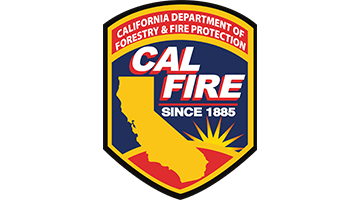In California, the need for post-fire restoration grows with each passing wildfire season. As the available seed stock continues to burn and the scale of lands to be restored increases, collaborative work toward solutions has become more important than ever before. Addressing gaps in the reforestation pipeline is a critical part of this work.
The reforestation pipeline traces the process of reforestation from beginning to end. It includes conifer seed collection, processing and storage; nursery production; site preparation and planting; and post-planting maintenance and monitoring.
The Reforestation Pipeline Partnership is a strategic collaboration between the United States Forest Service Region 5, the California Department of Forestry and Fire Protection and American Forests created to address challenges to post-burn reforestation activities on public and private lands.



The need for the Partnership emerged from Governor Gavin Newsom’s California Wildfire and Forests Resilience Task Force Reforestation Strategy Working Group, and through a national study, “Challenges to the Reforestation Pipeline in the United States,” which uncovered knowledge and structural gaps that need to be resolved in order to implement solutions at scale across public and private lands.
Among the most pressing issues, the lack of a sufficient workforce and scarce cross-boundary coordination is hindering California’s ability to meet the scale of the immediate need to replant approximately 1.5 million post-fire acres. Without restoration activity, the risk that these landscapes will convert to non-forested shrubland increases. The Partnership is a platform for all stakeholders to coordinate in taking on these challenges.

Photo Credit: Luis Vidal / American Forests
Reforestation Pipeline Partnership Goals
- Increase public-private cooperation on components of the reforestation pipeline to increase coordination and investment in the reliability of the pipeline and bolster its ability to meet California’s growing reforestation needs.
- Develop, test and build a workforce network that can increase cone collection and seed processing, thus, expanding seed availability.
The Path Forward
Two programs have been created to help achieve the Partnership’s goals.

The California Cone Corps. The California Cone Corps is a new workforce development pathway program that builds the pool of technicians needed to improve the scale of reforestation. The Corps will help address California’s conifer seed shortage by growing the capacity for increased cone collection.
Cooperative Format
Practitioners are invited to join in-person and virtual quarterly gatherings and smaller group huddles to identify and work toward shared goals.
Gatherings
- Quarterly in-person meetings on new research and successful case studies, as well as roundtable discussions.
- Offer inclusive, focused space to network and coordinate strategies to address key challenges in the reforestation pipeline across all public and private lands.
Huddles
- Bring together individuals from various stakeholder groups for collaborative projects and information sharing.
- Explore and pursue topical conversations related to specific bottlenecks in the reforestation pipeline, with administrative support from the Co-Op.
- Unite diverse networks to host information exchange events, create shared resources or run experimental trials.
- Increase information exchange that supports the use of best management practices in reforestation activities.
Join Us
Check back here to follow the latest position openings.
Participate
Interested in exchanging ideas to help meet the demand for replanting California forests? Join the Cooperative mailing list to stay in the know with quarterly newsletters, event invitations and opportunities to engage with California’s growing reforestation network. While you’re at it, check out past editions of the newsletter.
Resources
The first necessary step of any reforestation project is a supply of genetically appropriate seed with which to grow seedlings at a forest nursery. Previously collected and processed seed is stored at seedbanks for safekeeping until it is ready to be sown.
Native California conifer seeds sown at forest nurseries most often come from cultivated trees managed specifically for cone production or from collections of cones from healthy stands of trees in the forest. California’s publicly-owned and agency-managed seed banks foresee the need for a sharp increase in cone collection to meet demand in the coming decade.
To assist forest managers with responsibility for cone collection, a huddle of the RPP Cooperative created the “California Cone Hunter’s Pocket Guide,” for concise in-the-field reference material for those out “hunting” for collectible cones that can net seed for postfire reforestation projects throughout the state.
Need to request printed copies of the “Cone Hunter’s Pocket Guide?”
